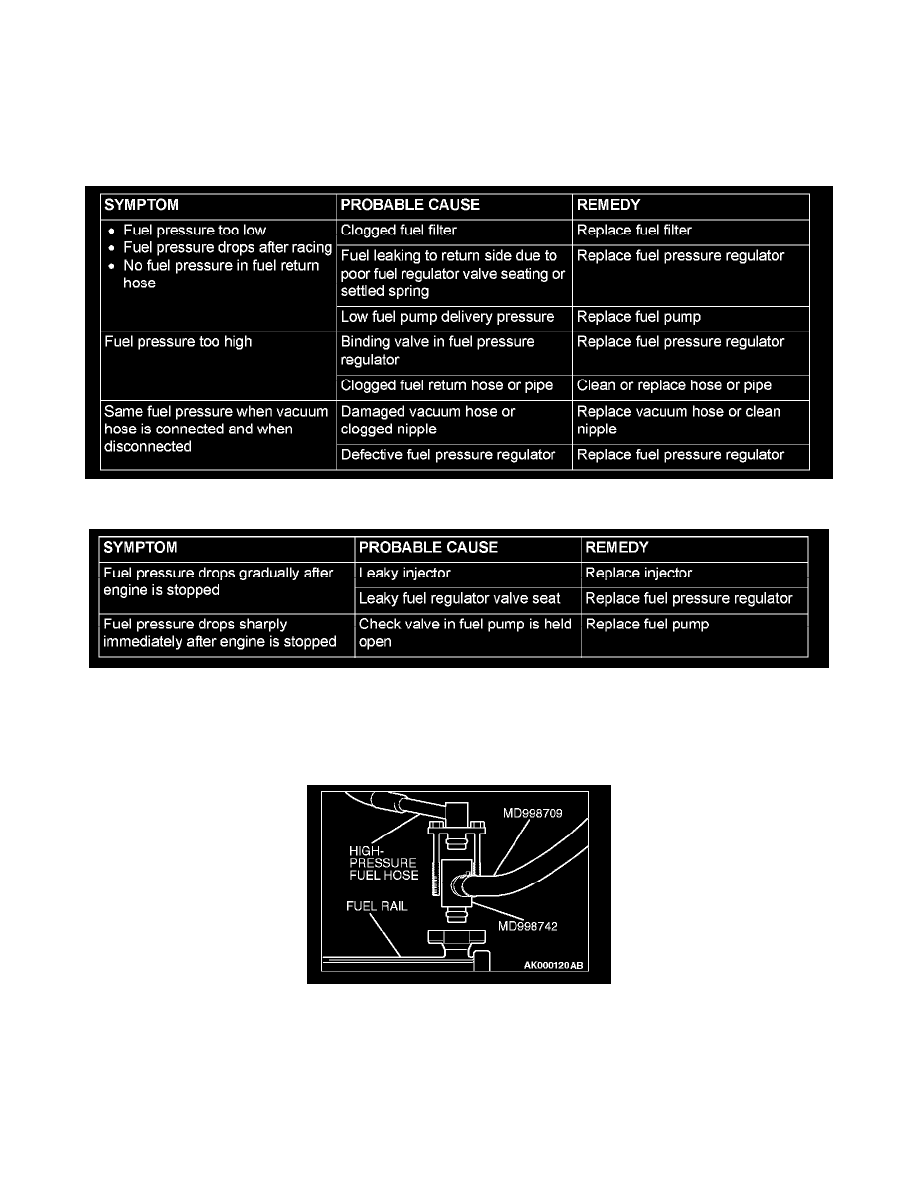Eclipse L4-24L SOHC Fuel Pump | Fuel Pressure System Specs | 2004

9. Disconnect the vacuum hose from the fuel pressure regulator and measure fuel pressure with the hose end closed with your finger.
Standard value: 330 - 350 kPa (97 - 103 in.Hg) at curb idle
10. Check to see that fuel pressure at idle does not drop even after the engine has been revved several times.
11. Revving the engine repeatedly, hold the fuel return hose lightly with your fingers to feel that fuel pressure is present in the return hose.
NOTE: If the fuel flow rate is low, there will be no fuel pressure in the return hose.
12. If any of fuel pressure measured in steps 10 to 13 is out of specification, troubleshoot and repair according to the table.
13. Stop the engine and observe fuel pressure gauge reading. It is normal if the reading does not drop within two minutes. If it does, observe the rate
of drop and troubleshoot and repair according to the table. Start, then stop the engine.
1. Squeeze the fuel return line closed to confirm leak-down occurs from defective fuel pressure regulator.
2. Squeeze the fuel supply line closed to confirm leak-down occurs from defective fuel pump check valve.
3. If pressure continues to drop with both fuel lines squeezed closed, injector(s) are leaking.
14. Release residual pressure from the fuel pipe line.
WARNING: Cover the hose connection with shop towels to prevent splash of fuel that could be caused by some residual pressure in the
fuel pipe line.
15. Remove the fuel pressure gauge, and special tools MD998709 and MD998742 from the fuel rail.
16. Replace the O-ring at the end of the fuel high-pressure hose with a new one.
17. Fit the fuel high-pressure hose into the fuel rail and tighten the bolts to specified torque.
